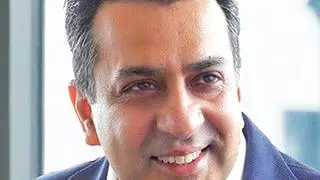India is expected to have the highest IP traffic growth rate with a 62 per cent CAGR from 2011 to 2016, according to a Cisco study.
This is the fastest-growing IP traffic at the country level, according to a Visual Networking Index (VNI) Forecast done by networking company Cisco.
(The VNI Forecast by Cisco is a study that estimates global Internet Protocol traffic growth and trends.)
Global IP traffic
In a second-place after India, Brazil and South Africa tie with 53 per cent CAGRs over the forecast period. The annual global IP traffic is forecast to be 1.3 zettabytes (a trillion gigabytes) by 2016.
The study also expects global IP traffic between 2015 and 2016 alone to increase by more than 330 exabytes (1,018 bytes), which is roughly the amount of global IP traffic generated in 2011.
Growth drivers
According to the company, the growth and service penetration is driven by the increase in number of devices like tablets, mobile phones, and other smart devices, and the demand for connectivity.
The forecast said that by 2016, there will be nearly 18.9 billion network connections, which is almost 2.5 connections for each person on earth compared with 10.3 billion in 2011.
The study also expects the number of internet users to go up to 3.4 billion by 2016, which is about 45 per cent of the world's projected population.
India’s internet traffic will grow at a compound annual growth rate of 64 per cent between 2011 and 2016, while mobile internet data traffic will grow 58-fold between 2011 and 2016, at a CAGR of 126 per cent.
Broadband, Wi-Fi connections
In India, consumer internet video traffic will grow 32-fold from 2011 to 2016 at a CAGR of 100 per cent. Also, the country will contribute 70 per cent of all internet traffic in 2016, up from 30 per cent in 2011.
In India, the average fixed broadband speed is expected to grow 4.2-fold during this period from 1.5 Mbps to 6Mbps.
Also, over half of the world’s Internet traffic is expected to come from Wi-Fi connections. India will have two billion networked devices by 2016 — double that of 2011, the report said.
However, while PC was expected to account for 71 per cent of the consumer internet traffic in 2011, with devices like smartphones and tablets coming in, this contribution will fall to 44 per cent in 2016.
Consumer SMS
Globally, the index suggests consumer SMS will be the most highly penetrated consumer mobile service — in 2011, there were 2.8 billion users (74 per cent of consumer mobile users), increasing to 4.1 billion users (90 per cent of consumer mobile users) by 2016.
Also, with the advent of smart TVs, TVs will account for over six per cent of consumer internet traffic up from 2 per cent in 2011.
On a quantity basis, however, the amount of peer-to-peer traffic is expected to increase from a rate of 4.6 exabytes per month in 2011 to 10 exabytes per month by 2016. Online music is expected to be the most highly penetrated residential Internet service globally.
The number of residential internet users is expected to go up to 79 per cent from the 63 per cent in 2011, while business mobile data traffic will grow 49-fold from 2011 to2016 at a CAGR of 117 per cent.







Comments
Comments have to be in English, and in full sentences. They cannot be abusive or personal. Please abide by our community guidelines for posting your comments.
We have migrated to a new commenting platform. If you are already a registered user of TheHindu Businessline and logged in, you may continue to engage with our articles. If you do not have an account please register and login to post comments. Users can access their older comments by logging into their accounts on Vuukle.